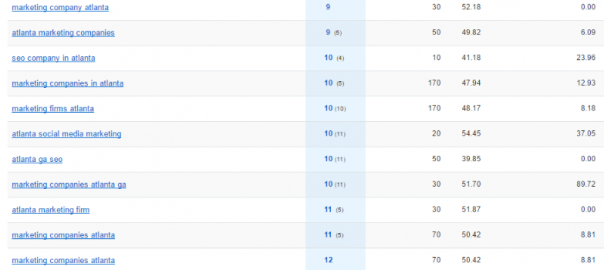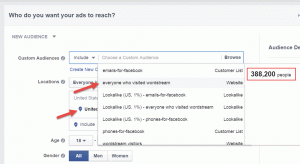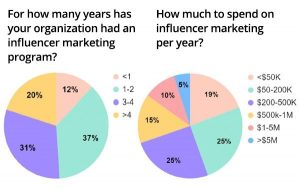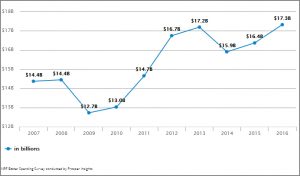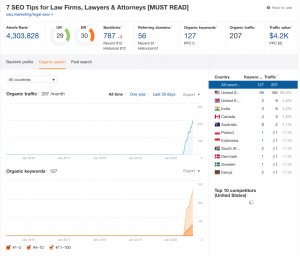It is amazing how powerful SEO can be, but it is not just for Google. It can be used for a variety of search engines with much less complicated algorithms. Using SEO principles can dramatically help you optimize for different search engines outside of Google and achieve higher revenues.
Below are the main SEO principles you can implement today on a variety of platforms such as:
Amazon (Organic & Seller Center)
Google Shopping
Bing Shopping
ebay (Organic & Merchant Center)
Other Marketplaces
Using Keyword Rich Titles

First, having the keywords on your products is paramount. Having them in the right place is how you optimize your products for additional revenue. Here is the basic practice everyone uses:
[Brand Name] or [Brand Name] + [Some Modifiers]
This could look like:
“Target Bohr’s Wall Paint” or “Target Bohr’s Wall Paint in Blue – Low Prices”
What is the issue with this? No one searches for “Target Bohr’s Wall Paint”! Simple, right? You want the best keywords mostly on the left hand side because search engines will mostly count these words ahead of others. This is a good example:
“Blue Wall Paint in Small, Medium, and Large – Bohr’s Brand at Target”
This is a much more effective SEO title. Here is a great template to work with when optimizing for these titles:
[Insert Keyword Phrase Here] + [Insert Modifiers] + [Insert either a CTA or Brand Names]
Of course, it is debatable what to use, because you might need to focus on your brand names for the particular marketplaces, in which case you would switch your “keyword phrase” with your “brand name.” Either are good to use and depend on your focus.
On a side note, one of the benefits of Amazon and eBay is that they show up in Google search as well.
If you optimize your title tags for Google search data, you also are optimizing your product listings for Google organic search traffic!
Keyword Rich Product Descriptions
Similar to the keyword rich product titles, you can also optimize the descriptions by having the best keywords in the first sentence. Having them mostly on the left-hand side is ideal.
You can also create bullet points to cover more modifiers. Your products will be searched by many long tailed searches, so having a “bigger spider web” is ideal. Here is an example. Say you sell “Alienware M15x Computers.” You know there are a lot of specifications to this product. Therefore, you want to include every specification possible in the title and description. Here is the best optimization for this particular product:
Alienware M17x – i7 Processor – 1,000 GB – 8GB RAM – Nividia GForce Card – Free Shipping
The first section is the main keyword phrase someone is searching: Alienware M17x. The second section are the modifiers when someone searches for “i7 Processor Alienware m17x,” and the third section includes the modifiers to help people click on my listing over those of my competitors. It all works together to show up for more searches, and get more clicks and more sales.
Using Keyword Research Data

Google is the largest search engine in the world. It understands search queries better than anyone. Why would you not use their data to better understand what people are searching for?
You can use the Google AdWords Keyword Tool to uncover what people are searching for and apply those keyword phrases to your products. This way you are optimizing your products for what people search for on the internet marketplace.
Is Google search behavior the same on Amazon and eBay? Not exactly, but in most cases it would be very similar, which is why using Google search data is good for all marketplaces.
Keyword Stuffing
Amazon, eBay, and other marketplace search engines are not very advanced algorithms. They use keywords, reviews, and popularity through purchases to decide placements. However, by the time this article is published, I am sure it will all change.
With that being said, you can now insert more keywords than what you could do on Google, but remember to keep it readable and create the best content possible. Do not stuff for the sake of stuffing, but the same rules that apply to Google do not apply to the other marketplaces. Marketplaces have not been known to apply penalties for over optimization.
Here are some examples of where you can add more keywords to your products:
- Amazon “keywords”: You can insert many different varieties of phrases here.
- eBay descriptions: You can put bullet points below your main description, and match phrases with your keywords.
- Amazon product descriptions: This is a good place to get good keyword phrases at the beginning of your description.
- Titles: This is ideal for any marketplace. You can also put modifiers on the end of the titles, like our “Alienware” example above, where it lists out the different part names.
Backlinking to Amazon & eBay Products
If you want to be ultra-creative in Google search, you can also optimize your Amazon and eBay product listings for different keywords, and then build links to them. This way they show higher in Google search for targeted keyword phrases and can help you achieve more sales.
Conclusion
Right now, the main factors for the marketplaces’ search engines, and even Google Shopping, are keywords, reviews, and purchases. Having strong SEO knowledge of keywords can really help make an impact on the keywords front and increase your revenue. This may change down the road, but, as of right now, strong keyword content is still king.
Digital & Social Articles on Business 2 Community(45)
